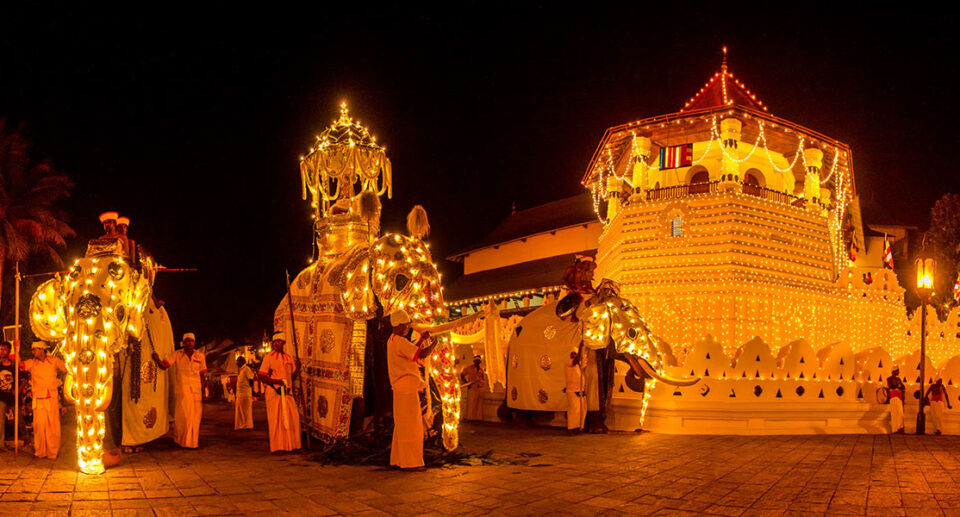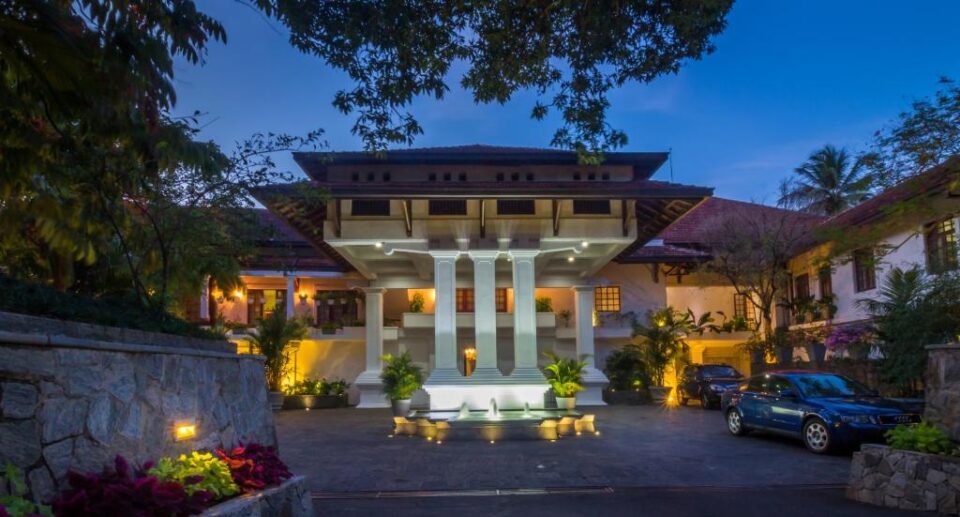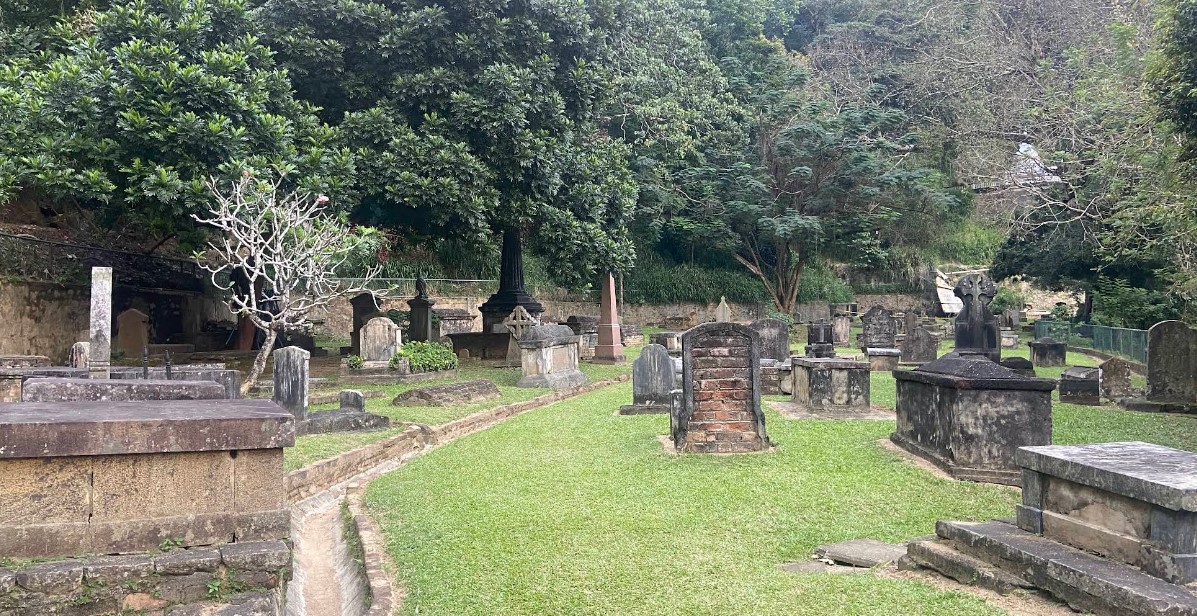Vesak Full Moon Poya Day: A Celebration of Enlightenment

Vesak Poya Day, commonly referred to as Vesak, is the most important religious and cultural occasion for Buddhists across the globe and especially in Sri Lanka, Thailand, Myanmar, Nepal, and Cambodia. Vesak is commemorated with deep piety and nationwide involvement in Sri Lanka, thus rendering it a remarkable public holiday and both a religious reflective and national celebratory time.
This sacred day commemorates the three most significant events in the life of Gautama Buddha his birth, enlightenment (nirvana), and death (parinirvana) all of which, by tradition, occurred on the full moon day of the month of Vesak (usually in May). In 1999, the United Nations also recognized Vesak as an international day of observance, designating its universal importance.
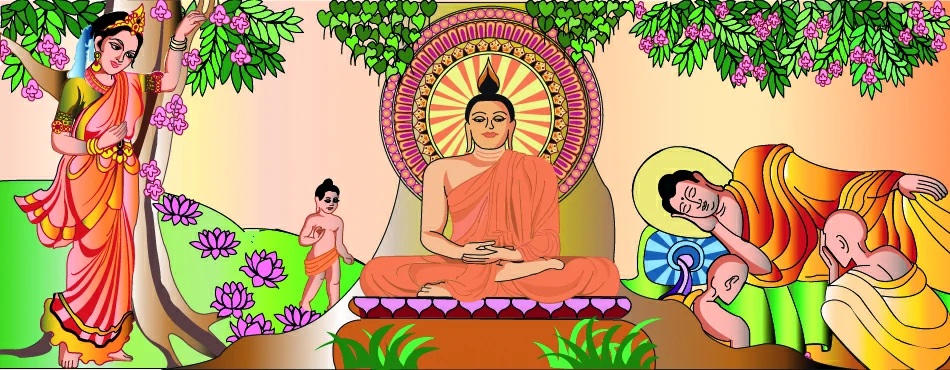
Historical and Religious Significance
The origins of Vesak date back over 2,500 years to the lifetime of the Buddha. Born Prince Siddhartha Gautama in Lumbini (modern-day Nepal), he renounced his life as a prince to seek truth and an end to suffering. After years of rigorous meditation and spiritual asceticism came enlightenment at the Bodhi tree in Bodh Gaya, India, and he became the Buddha, or “The Enlightened One.”
The Buddha’s teaching, the Dhamma, offered a means to end suffering through wisdom, moral life, and mental discipline. His passing away at the age of 80 was his entry into parinirvana, or final liberation, that put an end to the cycle of life and death. All three of these momentous occasions the birth, enlightenment, and death are said to have occurred on a full moon day, and Vesak Poya is the day set apart to commemorate them.

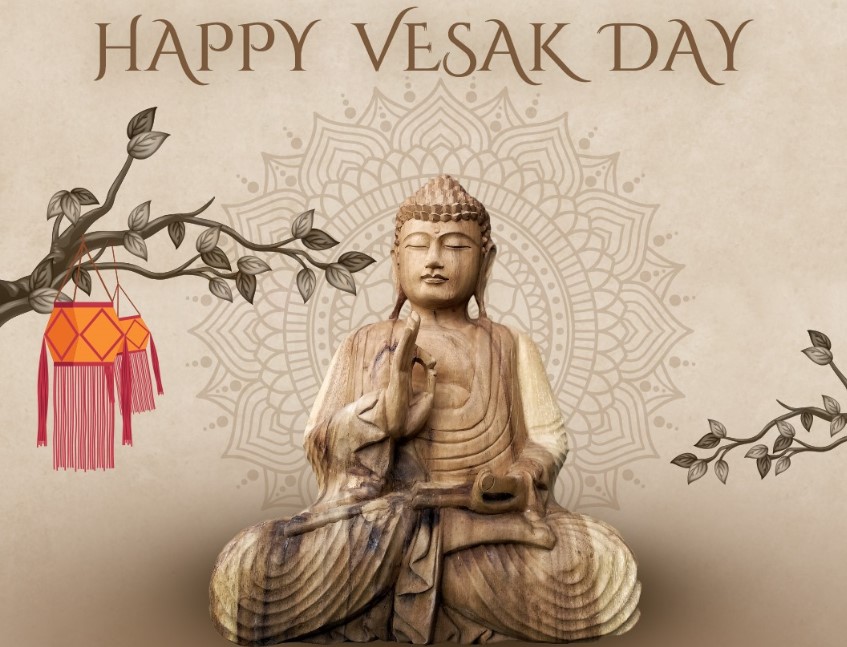
In Sri Lankan Theravāda Buddhism, Vesak is one of the holiest days of the year, and it is celebrated with great piety and a vast array of rituals and customs.
Preparations for Vesak in Sri Lanka
In the days leading up to Vesak, there is a perceptible change across the island. The streets, homes, shops, and temples are decorated with lanterns (Vesak kudu), illuminated displays, and multi-colored flags. People come together to build Vesak pandals (or thoranas) large lighted structures depicting scenes from the Jataka stories, the moral tales of the Buddha’s previous lives.
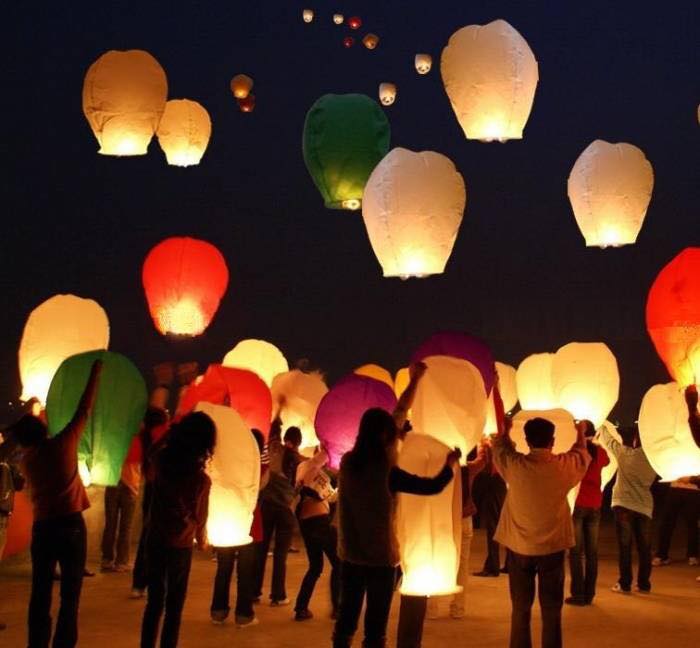
The atmosphere is celebratory but subdued. Houses are cleaned, white clothes are worn, and people prepare for the observances. Buddhists refrain from liquor, meat, and excesses during these days and focus on generosity, morality, and mental discipline.
Religious Observances and Activities
Vesak Poya Day witnesses thousands of Buddhists visiting Buddhist temples (viharas) across Sri Lanka from dawn to midnight. The day is marked by a series of religious observances:
Observing Sil (Precepts)
The majority of lay Buddhists take the Eight Precepts instead of the usual Five, observing more moral conduct and spiritual discipline for the day. This includes avoiding entertainment, rich foods, and sensual enjoyment.
Offering Alms (Dana)
Charity is the essence of Vesak. Devotees offer food, robes, flowers, and other essentials to monks, and also offer free food and drinks to the public through dansal charity stalls set up by individuals or organizations.
Meditation and Chanting
Temples are filled with the sounds of pirith (recital of Buddhist scriptures) and dhamma sermons, which teach the people about the life and philosophy of the Buddha. Meditation is also practiced by many, in search of peace and inner clarity.
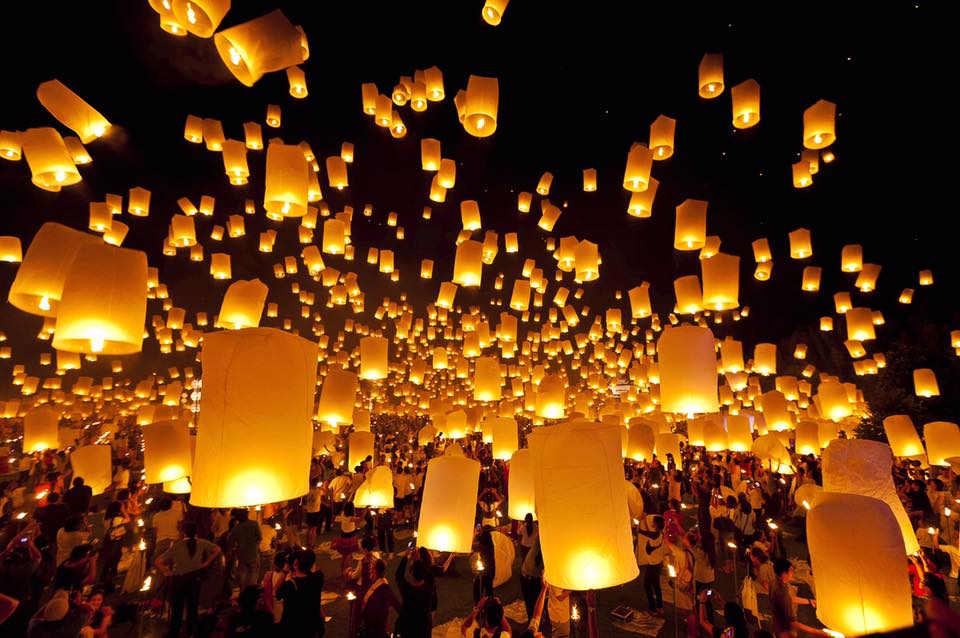
Decorations and Devotional Offerings
Buddhists make offerings of lotus flowers, incense, and oil lamps at temples. The Bodhi tree (sacred fig tree) in each temple is decorated and respected as a symbol of the Buddha’s enlightenment.
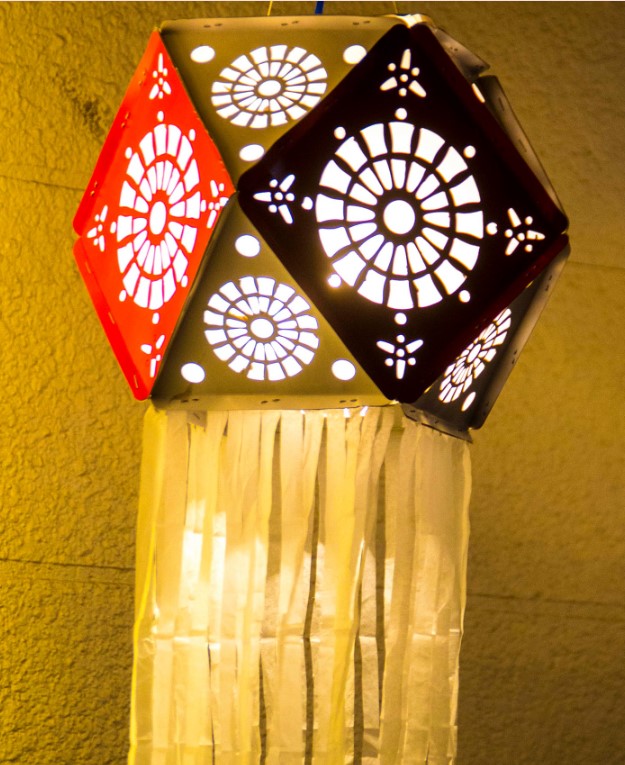
Vesak Lanterns and Pandals
Lanterns (kudu) and pandals are among the most characteristic features of Vesak in Sri Lanka. Colorful and ingenious, they light up streets and suburbs throughout the island.
Vesak Lanterns: Traditionally made from bamboo frames and colored paper, these symbolize the light of wisdom that dispels the darkness of ignorance. Making lanterns is a common family activity, and children as well as adults engage in creating and hanging them outside their homes.
Vesak Pandals (Thoranas): Giant illuminated displays at street corners present elaborate scenes from the life of the Buddha or Jataka tales. These are designed by artists and craftsmen and can take weeks or months to prepare. Large crowds gather to see their artistic beauty and listen to recorded or retold accounts.
Dansal – The Spirit of Giving
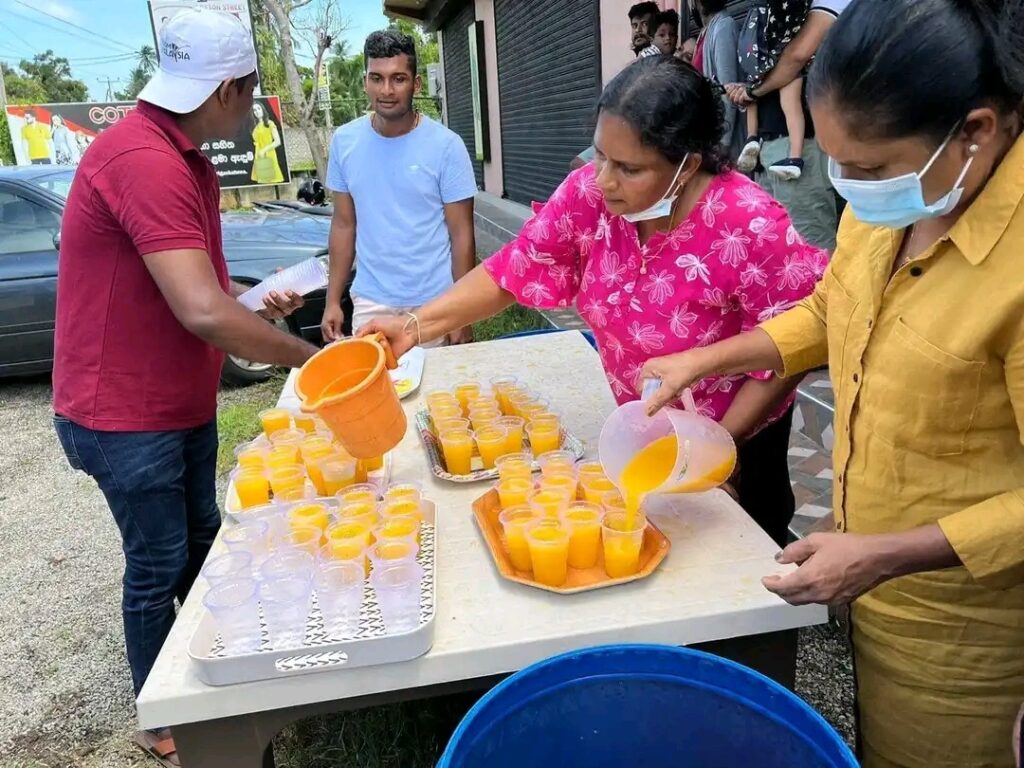
Another widespread Vesak practice is the establishment of dansal, or stalls providing free food and drinks. Inspired by the Buddhist value of generosity (dana), people from all walks of life cook food, drinks, and snacks to provide to the public.
Some of the typical offerings include: Rice and curry Noodles and string hoppers Ice cream, porridge, and herbal drinks Tea, coffee, and fruit juices..
Dansal are run by volunteers and reflect the selfless giving that is at the heart of Buddhism. They are especially important in bringing communities together and reminding people to think about others’ needs.
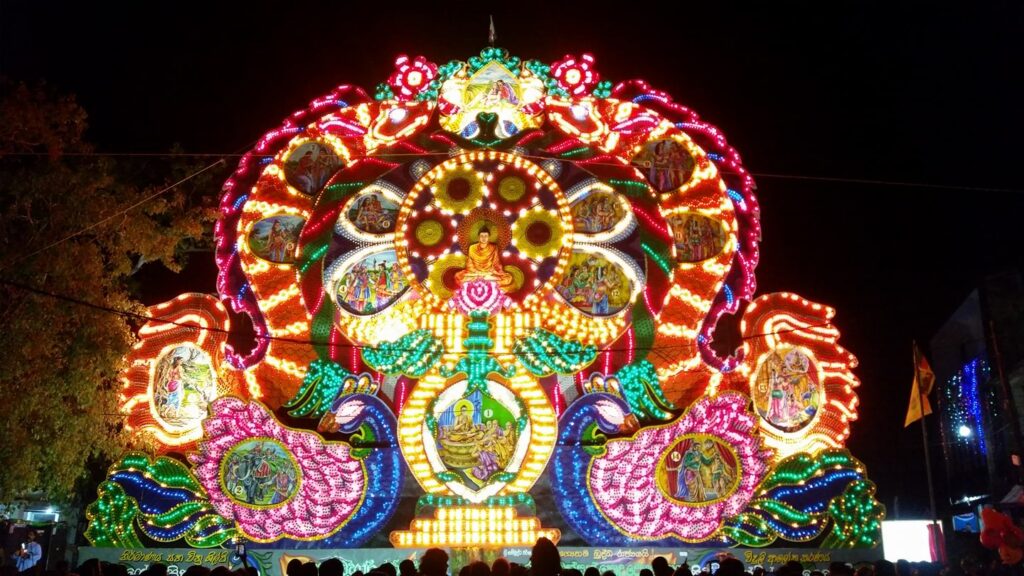
Peaceful and Contemplative Environment
Despite its festive appearance, Vesak is neither commercialized nor loud. Alcohol is not sold, and entertainment such as concerts and film screenings are postponed. This keeps intact the solemn, respectful atmosphere necessary for spiritual reflection.
Streets lined with lanterns and oil lamps take on a magical quality in the night, providing a sense of harmony and togetherness. Even non-Buddhists in Sri Lanka participate in the celebrations, which is a testament to the tolerant and peaceful nature of the festival.
Modern Relevance and International Celebrations
In 1999, the United Nations General Assembly proclaimed Vesak a day of international observance, calling it “the day of the full moon in May.” This was in acknowledgment of the global respect for the Buddha’s teachings and the widespread celebration of Vesak in countries across Asia and beyond.
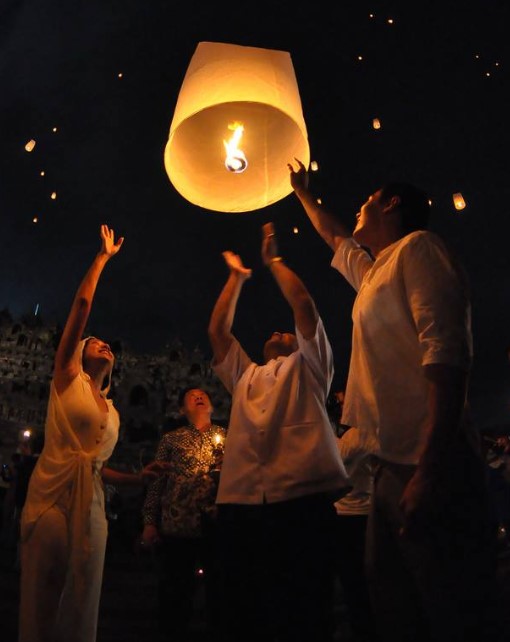
Vesak is celebrated now in: India and Nepal – the land of the Buddha’s life and birth Thailand, Myanmar, Cambodia, Laos – with temple rituals, merit-making, and cultural celebrations.. Indonesia and Malaysia – with big processions and lantern festivals.
Western countries – by Buddhist communities through meditation retreats, temple ceremonies, and interfaith gatheringsThe universal ideals of compassion, mindfulness, nonviolence, and tolerance make Vesak not only meaningful to Buddhists but to all humanity.
Vesak Poya Day is a holiday, indeed, but also a religious pilgrimage, a festivity of life and enlightenment, and a time for personal renewal and social unity. In Sri Lanka, it unites people across generations and communities by common values of compassion, reflection, and peace.
As lanterns light up the night sky and the air rings with the sounds of pirith, Vesak reminds us of the timeless message of the Buddha: that liberation from suffering is possible through right thinking, right living, and right insight. In a world too frequently ravaged by strife and materialism, Vesak holds out a beacon of wisdom, compassion, and inner peace.
Holiday Type – Public Holiday
Month – May





